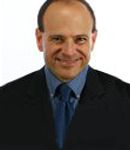Publication
Article
Family Practice Recertification
Urine Drug Testing: Putting It All Together
Author(s):
Taking one final look at the pros and cons of urine drug testing for opioid risk mitigation.

Michael Schatman, PhD, CPE
In last month’s Pain Perspectives, I discussed the distinction between immunoassay and more sophisticated and accurate laboratory urine drug testing(UDT). This month, I will finally get around to what to do with all of the information that can be gleaned from UDT that will make it useful in your clinical pain practices.
As discussed last month, an inconsistent immunoassay test is not necessarily a sign that a patient is “guilty” of aberrant behavior, as its results are not definitive. These are the tests that need to go to the laboratory for further analysis. Many practitioners have complained that the reports that they receive from their labs are confusing and difficult to interpret (1).
Having read many reports from different labs, this confusion is certainly understandable. Choosing a lab with which to work should be taken seriously, given the substantial variance in the accessibility of different labs’ reports. Take the time to sit down with several lab representatives and go over sample reports with them, as some are written in English while others seem to be written in Ancient Greek! Additionally, the prudent primary care clinician will ask the representative about what type of support is available for explaining results when they are not clear.
Some lab companies actually have 24-hour support available at no additional cost. Accurate interpretation is particularly important, given the results of a study of primary care residents in which accuracy of interpretation was found to be poor while resident confidence in their ability to interpret accurately was falsely high (2). Another study (3) determined that physicians who utilized UDT’s knowledge of interpretation of results was no better than that of those physicians who did not incorporate UDT into their practices!
Once you understand the significance of inconsistent confirmatory testing results, how do you go about discussing them with your patient? Although the data may be somewhat dated, Passik and colleagues (4) determined that even physicians who performed UDT rarely followed up with their patients regarding the results. Hopefully, this situation has improved — although there is no data substantiating that this has been the case.
Despite the incredible science behind UDT, primary care providers cannot lose sight of the need to focus on the patient as a vulnerable human being, and an empathetic and non-judgmental approach will serve to preserve the sanctity of the physician-patient relationship. In a recent article on ethical issues in UDT (5), the authors note that “Discharging a patient from a medical practice is virtually never an acceptable response to an inappropriate drug test”.
One wouldn’t discharge a diabetic patient from his or her practice for eating a candy bar, correct? Rather than approaching aberrancy purely from a “police” or “entrapment” perspective, an inconsistent UDT can provide a “learning moment” in which ancillary services such as addiction medicine and chemical dependence counseling can be brought into the comprehensive treatment plan. We cannot lose sight of the reality that the diseases of chronic pain and addiction often coexist. Finally, we have to keep sight of the fact that UDT is not a “perfect” science, and that factors such as pharmacogenetic differences and drug-drug interactions may impact results (6).
This concludes Pain Perspectives’ tutorial on the basics of UDT. For those who are interested, please refer to the primary sources listed in the references of my last four columns. Next month, Pain Perspectives will address another issue that will hopefully help make your treatment of patients with chronic pain more holistic, clinically effective, and satisfying to your patients as well as to you.
References
1) Reisfield GM, Webb FJ, Bertholf RL, Sloan PA, Wilson GR. Family physicians’ proficiency in urine drug test interpretation. J Opioid Manag. 2007;3:333-337.
2) Starrels JL, Fo AD, Kunins HV, et al. They don’t know what they don’t know: internal medicine residents’ knowledge and confidence in urine drug test interpretation for patients with chronic pain. J Gen Intern Med. 2012;27:1521—1527.
3) Reisfield GM, Bertholf R, Barkin RL, Webb F, Wilson G. Urine drug test interpretation: what do physicians know? J Opioid Manag. 2007;3:80-86.
4) Passik SD, Schreiber J, Kirsh KL, Portenoy RK. A chart review of the ordering and documentation of urine toxicology screens in a cancer center: do they influence patient management? J Pain Symptom Manage. 2000;19:40-44.
5) Reisfield GM, Maschke KJ. Urine drug testing in long-term opioid therapy: ethical considerations. Clin J Pain 2014;30:679-684.
6) Pesce A, West C, Egan City K, Strickland J. Interpretation of urine drug testing in pain patients. Pain Med. 2012;13:868-885.






